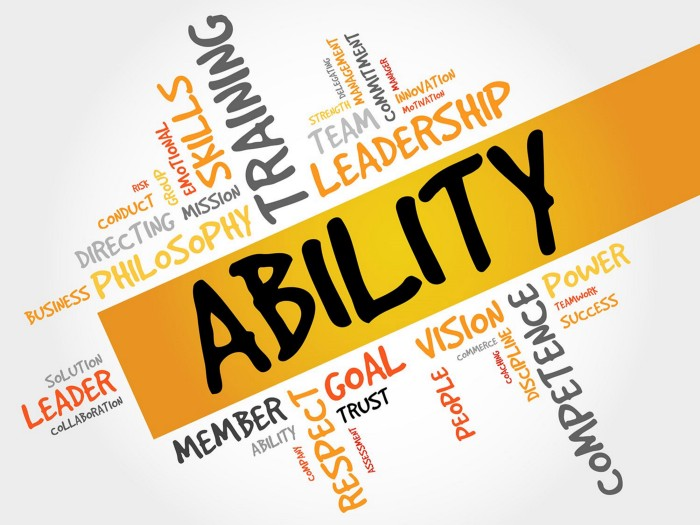Skills:
Skills are the tasks that you can do/perform well through education, training or life experience. It is far more manageable and can be increased in due time through practice. Skill management explores, develops, and uses employee’s skills in general as part of human resources and helps in identifying gaps which are necessary to be bridged for the betterment of business and individual’s benefit. In simpler terms, skills are like action verbs such as Training, implementing, leading, promoting, developing, presenting, organizing, and planning.
Traits:
They are what makes one person different from another. They are features of one’s character. Trait Theories explains personality that can help in speculating one’s personality through genetics or experiences in life. These are the features which remain relatively constant over one’s lifetime.
These also affect one’s ability to pick up skills such as trait of extroversion which can increase your outgoingness, assertiveness and drive for thrill-seeking. Thus with this trait, it would enable an individual to gain and improve public speaking skills.
Understanding of traits also helps in detecting learning styles, communication styles, ability to act as part of a team, and behavior under stress. Some of the common traits are energetic, dependable, determining, focused, intuitive, loyal, honest, punctual, and responsible.
Ability:

Ability is the quality of being able to do something. If an ability is learned, then it is a skill instead if it is innate, then it is Ability. Ability, when refined or utilized, plays a pivotal role in generating a skill. For instance, Organization and prioritization as abilities can help an employee to develop instructional develop skills.
Metrics of Measurement
Skills
Skill levels can be measured through various surveys of individuals and employers. These surveys use one of the six measures of skills namely;
- Occupation
- Qualification
- Duration Of Education
- Skill Tests
- Self-Assessments
- Job Requirements.
Each of these measures has its advantages and disadvantages which would be discussed below:
- Occupation :
This provides an indication of the types of job undertaken by those in employment. Building on this approach, the international standard classification of Occupations (ISCO-08) distributes jobs to occupations, based on a description that takes into account the level of qualification and the type of tasks to be carried out-which makes ISCO-08 occupations a good proxy measure for skill levels.
ISCO-08, however, is not a strict hierarchical structure: one set of jobs is not necessarily considered to be more skilled than another. That said, the percentage of people employed over time in, for instance, managerial, professional and associate professional occupations- i.e. higher level occupations- provides an indication of the extent to which skill demand is rising or falling.
- Qualification
By using a standard classification system, such as the International Standard Classification of Education (ISCED), it is doable to estimate the extent to which people are qualified at different levels. With time, more people in employment are qualified at a higher level, then this might reflect the increasing Skill intensity of employment.
- Duration of Education
It provides a measure of skill equivalent to that of qualification. This is based on an assumption that there is a positive correlation between time spent on education and skills gained during that time, hence leading to the enhancement of skill levels.
The disadvantage of using qualification and duration of Education as a way for measuring skill is that it does not depict full measure of several skills that can be observed within a given qualification level.
- Skill Tests
Skill levels can be determined by testing skill levels directly. These tests involve assessments in which respondents are asked to complete assignments that are standardized and allows comparing skill levels across a particular population. Internationally, the most regularly tested skills are literacy and numeracy. The most well-known use of skills testing is the OECD’s PISA (Programme for International Student Assessment) that first ran in 2000 and continues to this day.
Use of skill tests provides objective measures of skills, however, in practice, standardized skills testing are complex and time-consuming exercises that provide information on a relatively narrow range of specific skills.
- Self-Assessment
These approaches tend to cover a wide range of skills, but as with many self-reported surveys, there is uneasiness about the accuracy with which people self-assess their skills. For reasons of pride or self-respect, people may be tempted to report that they are more/less skilled than they really are.
- Job Requirement
This is about inquiring skills they use in their jobs. It provides both a proxy measure of Skill levels (individuals are assumed to possess these skills as they exercise their jobs) and of Skill demand (the skills needed in a particular job). This approach can focus on a range of basic and generic skills (e.g. literacy, communication, influencing skills, etc.), and whether the importance of a particular skill is increasing or decreasing.
Traits
They are natural in nature and are a set of features which would remain constant over the years. To check for whether traits are present in a particular individual, scientists, employers have found out different tests or assessment tools by means of which they can check for traits if it is present or not and take a decision on a certain parameter for which the assessment was conducted. Some of the assessment tools are as follows:
- Clinical Psychology Tests: DASS (psychology), Beck Depression Inventory
- Cognitive Development Tests: Knox Cubes, Porteus Maze Test.
- Intelligent Tests: Miller Analogies Test, Turing Test, Stanford-Binet IQ Test.
- Personality Tests: Activity Vector Analysis, Big 5 personality theory.
Abilities
Measurement of abilities has the same assessment tools as there are for traits, such as to check for intellectual ability, IQ tests are used which is a combination of general aptitude battery tests. The assessment techniques used for ability testing is general versus specific distinction which checks for both achievement and aptitude of an individual, for example, there is a test which measures reading as a whole and also decoding of syllables.
Conclusion
Ability and Skill have a thin line in between, that distinguishes them one from another and are easier to be measured. However, traits are completely different from what ability or skill is, and abstract in nature, making it difficult to be measured. Therefore, the countless number of personality assessment tools and techniques have been the outcome of long research done by different experts from different fields to figure out an accurate way to measure traits in an individual. These assessment tools are also sometimes used to measure ability or skill of an individual.
References
- https://skillspanorama.cedefop.europa.eu/en/blog/how-can-we-measure-skills
- Ability Testing Part-1- Uses, Consequences, and Controversies
- https://en.wikipedia.org/wiki/List_of_tests

